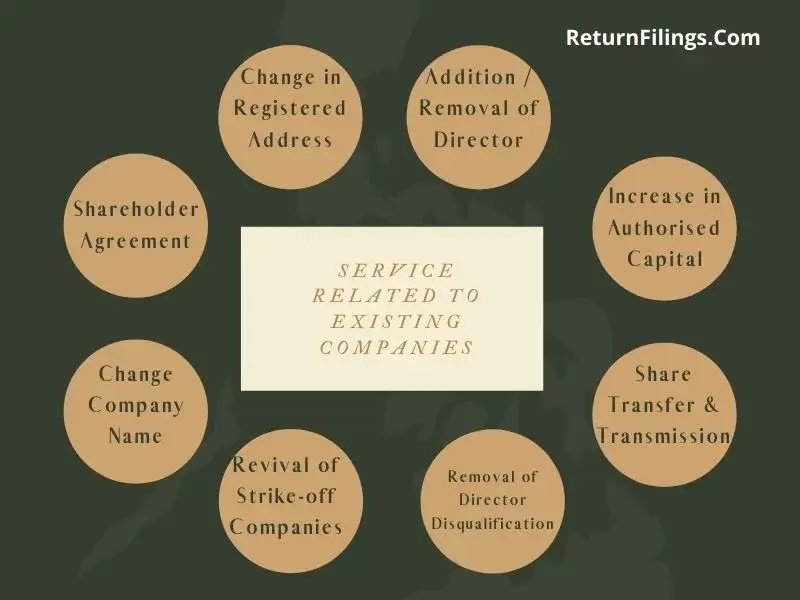Director Removal or Resignation in India: Legal Process & Compliance Checklist
1. Introduction
A director plays a crucial role in managing the affairs of a company. However, there may be circumstances where a director chooses to resign or the company decides to remove a director. The Companies Act, 2013 lays down clear procedures for the removal or resignation of director, ensuring transparency and compliance with statutory requirements.
2. Minimum Director Requirement Before Resignation or Removal
As per the Companies Act, 2013, a company must maintain a minimum number of directors:
• One Person Company (OPC): At least one director.
• Private Limited Company: At least two directors.
• Public Limited Company: At least three directors.
Before resigning or removing a director, the company must ensure that the minimum director requirement is met to maintain business continuity.
3. Procedure for Resignation of a Director
3.1 Steps for Resigning Director
a. The director submits a resignation letter to the company, specifying the date of resignation and the reason.
b. The company acknowledges the resignation and calls a Board Meeting with at least seven days’ clear notice.
c. The Board of Directors decides whether to accept the resignation.
d. Once accepted, the board passes a resolution approving the resignation.
e. The company files Form DIR-12 within 30 days with the Registrar of Companies (ROC) to update the director’s resignation.
f. The resigning director files Form DIR-11 to inform the ROC of their resignation.
3.2 Documentation Required
• Resignation Letter
• Board Resolution accepting the resignation
• Form DIR-11 (Notice of resignation by the director to ROC)
• Form DIR-12 (Company’s filing to update directorship changes)
3.3 Consequences of Non-Compliance
Failure to file the necessary forms within the prescribed period may result in penalties for the company and the resigning director. The director remains liable for any acts committed during their tenure until the resignation is officially recorded with the ROC.
4. Procedure for Removal of a Director
4.1 Removal by Company (Suo-Moto)
a. The company calls a Board Meeting with a clear agenda to remove the director.
b. The director is given a chance to be heard before removal.
c. If the board decides to proceed, an Extraordinary General Meeting (EGM) is convened to pass an Ordinary Resolution for removal.
d. The resolution is passed, and Form DIR-12 is filed within 30 days with the ROC.
4.2 Automatic Removal Due to Non-Compliance
• If a director fails to attend three consecutive Board Meetings in a 12-month period without seeking leave, they are deemed to have vacated their position.
• The company must file Form DIR-12 to notify the ROC of this automatic removal.
4.3 Special Cases of Removal
• Directors appointed by the Central Government or Tribunal cannot be removed by the company unless as per specified guidelines.
• Directors appointed as per agreements or contracts with financial institutions may require approvals before removal.
4.4 Documentation Required
• Board Meeting notice and agenda
• Copy of the Ordinary Resolution passed in EGM
• Notice to the director for the hearing opportunity
• Form DIR-12 (Change in directorship details)
5. Case Study: Impact of Non-Compliance
Scenario: A private limited company had only two directors. One director resigned without ensuring compliance with the minimum director requirement.
Consequences:
• The company was non-compliant with the Companies Act, 2013.
• No new director was appointed in time, leading to regulatory penalties.
• Business operations were hampered due to a lack of decision-making authority.
Lesson Learned: Directors must ensure that their resignation does not lead to non-compliance with statutory requirements.
6. How We Can Help
At ReturnFilings.Com, we provide comprehensive support for:
• Director resignation filings (DIR-11 & DIR-12)
• Director removal compliance & documentation
• Legal guidance on regulatory obligations
• Assisting in Board and Shareholder resolutions
By following the correct compliance process for removal or resignation of directors, companies can ensure smooth transitions and avoid legal complications.
We ensure timely and hassle-free compliance so you can focus on growing your business.
For professional assistance, reach out to us on email: info@returnfilings.com or on whatsapp: https://wa.me/919910123091 to ensure all statutory obligations are met on time.
frequently asked questions (faq's) related to Removal and Resignation of Directors in a Company
Q How can a director resign from their position?+
A A director can resign by submitting a written resignation letter to the company's board of directors. The resignation is effective from the date specified in the resignation letter or, if no date is specified, from the date of receipt of the resignation letter by the board.
Q Is it necessary for a resigning director to give a reason for their resignation?+
A No, a director is not legally obligated to provide a reason for their resignation.
Q What is the procedure for accepting a director's resignation?+
A The board of directors should formally acknowledge and accept the director's resignation at a board meeting. The company should then file the necessary forms with the Registrar of Companies (ROC).
Q What forms need to be filed with the ROC when a director resigns?+
A Form DIR-12 needs to be filed with the ROC within 30 days of the resignation.
Q What is the effective date of resignation?+
A The resignation is effective from the date specified in the resignation letter, or if no date is specified, from the date the resignation letter is received by the board.
Q Can a director withdraw their resignation after submitting it?+
A Generally, a director cannot unilaterally withdraw their resignation once it has been accepted by the board. Withdrawal might be possible only with the board's consent.
Q How can a director be removed from their position?+
A A director can be removed by the shareholders at a general meeting. Certain directors, like those appointed by financial institutions or under specific agreements, may have special provisions protecting them from removal.
Q What are the grounds for removing a director?+
A The Companies Act specifies certain grounds for removing a director, such as disqualification under the Act, failure to attend board meetings, or conduct prejudicial to the interests of the company.
Q What is the procedure for removing a director?+
A The procedure generally involves passing a resolution by the shareholders at a general meeting, giving the director an opportunity to be heard, and filing the necessary forms with the ROC.
Q What forms need to be filed with the ROC when a director is removed?+
A Form DIR-12 needs to be filed with the ROC within 30 days of the removal.
Q Can a director be removed before the expiry of their term?+
A Yes, a director can be removed before the expiry of their term by the shareholders, subject to the provisions of the Companies Act and the company's articles of association.
Q Can a managing director be removed?+
A Yes, a managing director can be removed, but their removal may be subject to the terms of their employment contract.
Q What is the difference between resignation and removal of a director?+
A Resignation is when a director voluntarily leaves their position. Removal is when a director is forced to leave their position by the shareholders.
Q What are the consequences of resigning or being removed as a director?+
A The consequences can vary depending on the circumstances. Generally, the individual ceases to be a director and loses the powers and responsibilities associated with the position. However, they may still be liable for actions taken during their tenure.
Q Can a director be reappointed after being removed?+
A Whether a director can be reappointed after being removed depends on the specific circumstances of the removal and the provisions of the Companies Act.
Q What happens to the director's responsibilities after resignation or removal?+
A The director's responsibilities cease upon the effective date of their resignation or removal, but they remain liable for any acts or omissions during their tenure.
Q How do I draft a director resignation letter?+
A A resignation letter should be addressed to the board of directors, clearly state the director's intention to resign, the effective date of resignation, and may include a statement of thanks.
Q What are the legal implications of resigning as a director?+
A A director's legal responsibilities cease upon resignation, but they may still be liable for actions taken while they were a director.
Q Can a director resign orally?+
A While an oral resignation might be given, it is always best practice to submit a written resignation letter.
Q What is the notice period for a director's resignation?+
A There is no mandatory notice period unless specified in the company's articles of association or a director's agreement.
Q Can a director be removed without notice?+
A The Companies Act typically requires that the director be given an opportunity to be heard before being removed.
Q What is the role of the board of directors in the removal of a director?+
A The board is involved in calling the general meeting where the removal is voted on and ensuring that due process is followed.
Q How can I find information about directors who have resigned or been removed?+
A The MCA website is the official source for such information.
Q What are the ethical considerations related to director resignation and removal?+
A Directors should act in the best interests of the company and its shareholders, and ensure a smooth and transparent transition.
Q Can a director claim compensation for loss of office upon removal?+
A It depends on the terms of their contract and the reasons for removal.
Q Where can I find the latest MCA notifications and circulars related to director resignation and removal?+
A The MCA website is the official source for notifications and circulars.
- For further reading, explore the following topics:
- 🚚 GST E-Way Bill System Explained: Online Generation, Transport Compliance & Penalties
- 📜 Complete Guide to GST Exemptions in India: Applicability, Records & Best Practices
- 🌍 Understanding RBI Compliance for Foreign Businesses in India: Branch, Liaison & Project Offices
- 📝 One Person Company (OPC) Closure in India: Legal Process, Modes & Documentation

